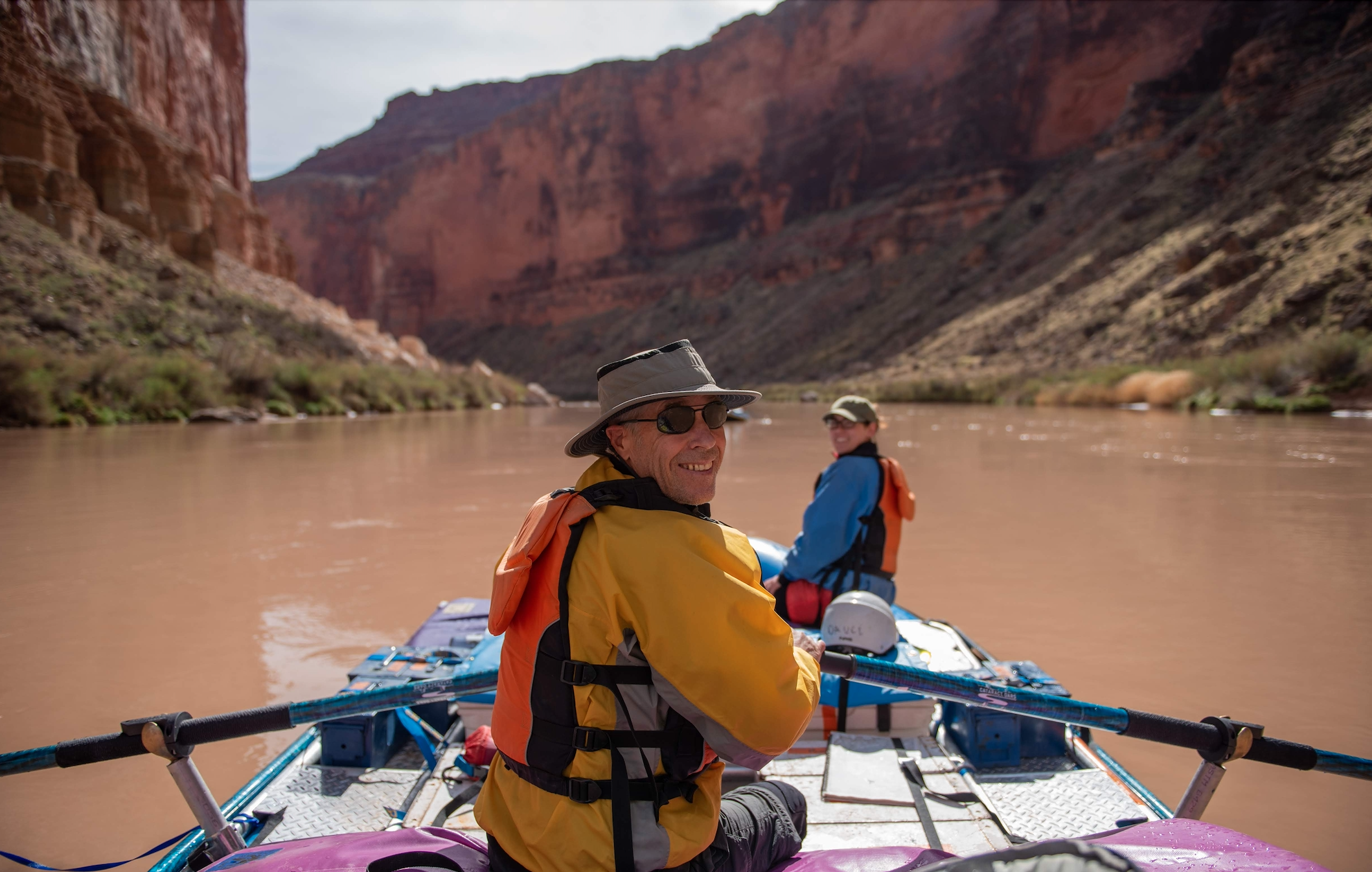“Raging Floods.” “Climate Migrants.” “Coral Reefs Gone.” These are the kinds of stories spanning today’s headlines. As temperatures are rising globally, morale is steadily sinking.
New solutions are needed to combat this crisis, environmentally and emotionally. UC Davis creative writing master’s students and professors say that creative storytelling and art may be the keys to helping the world process these changes, and that collaborations with scientists can give rise to new, innovative solutions.
“Art and poetry are going to play a pivotal role in adapting human behavior to these new circumstances that are vastly different from anything we’ve known,” said poetry master’s student Trevor Bashaw.
Imagining a better (or worse) future
Free of limitations, art is a portal to reimagine the world.
In 2020, UC Davis English professor Michael Ziser and geology professor Nicholas Pinter took graduate students on a white water rafting trip down the Colorado River and through the Grand Canyon. They also invited two famous science fiction writers, Paolo Bacigalupi and Kim Stanley Robinson, both of whom write about a climate-apocalyptic world.
“The advantage science fiction writers have is that they have license to completely reimagine things,” said Ziser. “They can just pose a solution and think about how it may work out. It encourages people to imagine, what world do they prefer to be a part of?”

The authors and students entered the Grand Canyon on March 10, 2020. They emerged two weeks later to a world shut down amid a global pandemic. The merging of science and science fiction felt all too relevant.
Bacigalupi’s thriller novel, The Water Knife, tells a dark, futuristic story where the Southwestern U.S. is engaged in a violent war for water. Bacigalupi attended the Grand Canyon trip with graduate students studying the same river system he wrote about drying up.
Robinson's novels also explore what the future may look like under continued corruption and failure to address world crises like climate change. On the trip, students read Robinson's Pacific Edge, part of his series depicting the future of California.
By inviting these authors, Pinter and Ziser hoped to encourage the merging of art and science and to give graduate student scientists a new way of looking at the future of their study systems.
“Any channel by which we can get more people from different walks of life to be thinking about these problems, the better,” said Ziser. “These problems require our coordinated response as a civilization.”

Collaborations between scientists and artists can generate solutions that one party may not have been able to accomplish on its own.
“Everyone is being asked to hyperspecialize, and I think that age is over,” said Ziser. “We need to keep a multi-pronged approach to understanding the world.”
To poetry master’s student Bashaw, the divide between art and science isn’t clean cut, and separating the two can limit progress.
“The sciences and the arts have a lot to learn from each other, in terms of knowledge bases and methodologies,” said Bashaw. “The writer’s workshop is a lot more similar to a lab than people may realize; a lot of scientific discoveries were made through creative accidents; and art is pushed forward by technological advances.”
With collaborations like these, new ways of thinking can emerge. Art can be a limitless tool toward furthering scientific discovery.
“Everything is trapped by its genre. But when we try to imagine something radically different, we create something bigger,” said Pinter.
Where processing has a place
For creative solutions to be acted upon, policymakers, scientists, and the public need to reach common ground. UC Davis creative writing master’s students contend that art and writing not only generate innovative solutions, but also open gateways to these solutions.
“With climate change, there’s a lot of grieving that we need to do as a community,” said Bashaw. “I don’t think we have even emotionally accepted it’s occurring.”
Bashaw thinks that only when humanity can process the climate crises can the world come together to carry out solutions. To them, art is where processing has a place.
“In art and poetry, there can be more room for love and feeling and all of these things that make us human,” said Bashaw.
In their own writing, Bashaw draws parallels between processing the queer experience and processing the climate crisis. They describe their writing as “queer eco-poetics,” which focuses on how individuals relate to nature and constructed environments.
“Poetry can transform what feels scary into all kinds of different things and bring a sense of peace,” said Bashaw. “I want people to feel seen without shame. I think of my writing as home-making and finding peace within place.”


Connie Pearson, a creative nonfiction master’s student at UC Davis, also believes that art can bring to life the human emotional experience within major world crises.
“It’s a real sweet spot: seeing what’s going on, combined with how somebody is processing,” said Pearson.
Pearson’s work comprises personal essays centered around her experiences being an animal activist. By diving into her vulnerable and personal experience, she hopes to humanize the activism she’s been part of since 1980.
“Vulnerability is so crucial in writing,” said Pearson. “I connect so much more to pieces written from the personal lens.”
Processing and healing
Climate change is a global phenomenon, and will require everyone working together to reach a solution. This is a daunting task, but with solutions posed by both scientists and artists together, and with a shift in mindset, the future could heal.
“Art allows you to sit with the unknown and ambiguity in a way that’s not paralyzing, but exciting,” said Bashaw. “We need to help people process and confront this looming phenomenon.”
Malia Reiss is a science news intern with UC Davis Strategic Communications. She studies environmental science and management at UC Davis.
Media Resources
Kat Kerlin, UC Davis News and Media Relations, 530-750-9195, kekerlin@ucdavis.edu
